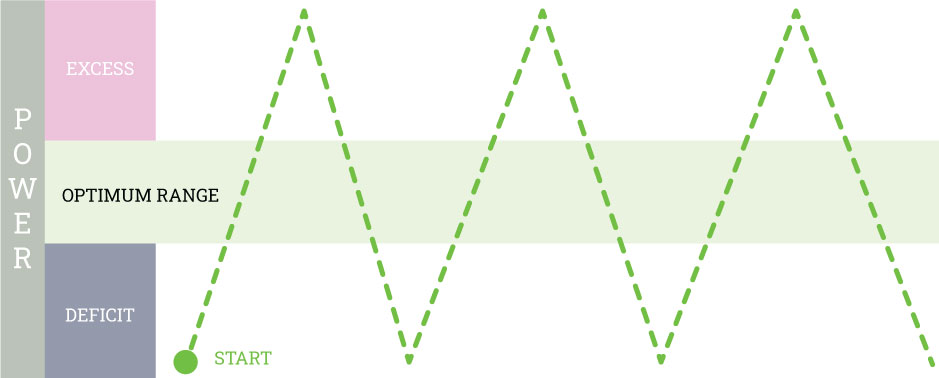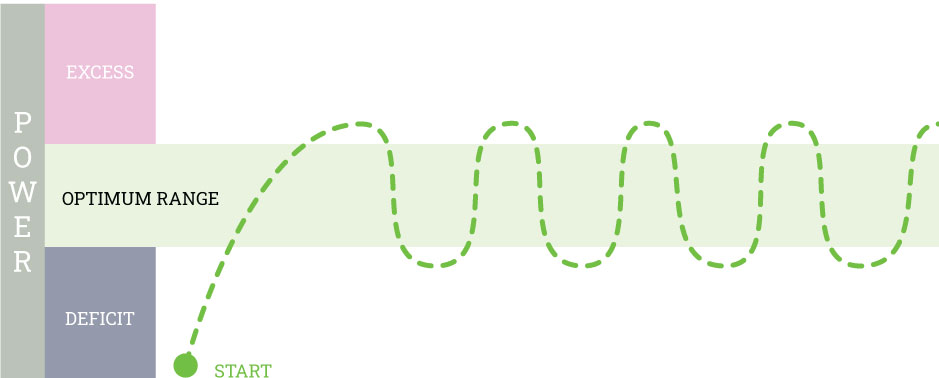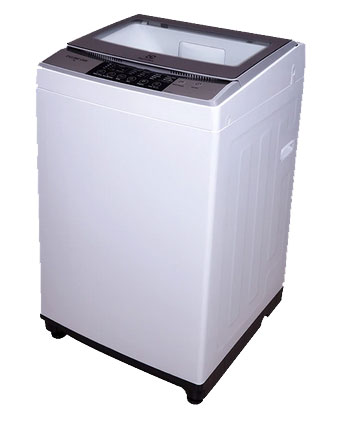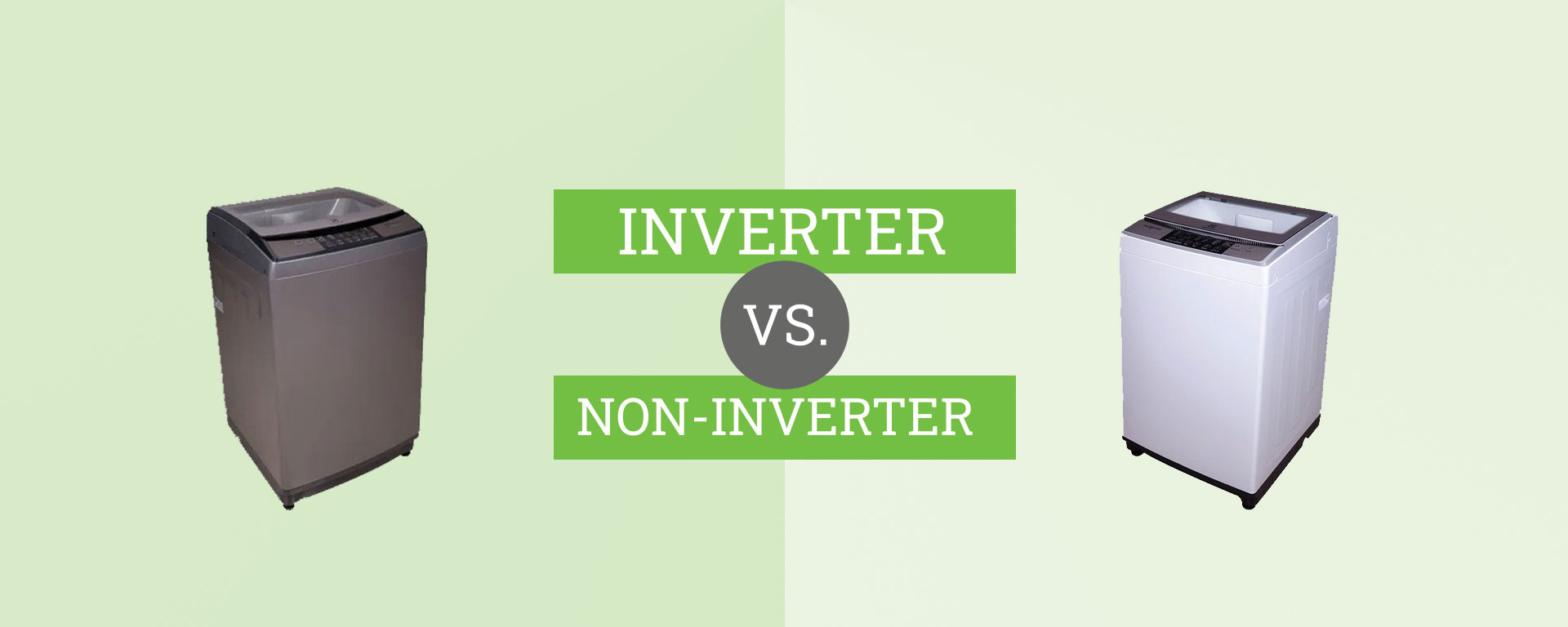Most of us have an idea on what an inverter does for refrigerators and air conditioners. It saves a lot of energy (and money) when operating these two notoriously power-hungry appliances. But for a washing machine?
Does a washing machine even use a lot of energy to warrant the use of an inverter? Is it even worth it to spend an additional ₱5,000 – ₱7,000 more to get that inverter upgrade?
In this post, we will give you some pointers on the differences between inverter vs. non-inverter washing machines so that you can have a more informed decision when buying a new washing machine.
How a washing machine works
Whether it’s a top-loading type or a front-loading type, a washing machine works by moving your clothes through water and detergent to loosen dirt and grime with the drum walls acting as the washboard.
When you load the laundry in your fully automatic washing machine, its sensors will detect how much the clothes weigh. With this information, the washing machine’s microprocessors decides how much time and water is needed for that batch of laundry.
As with the spin speed however, washing machines are designed with the assumption that you are going to load whatever is the maximum capacity your particular model can handle. Whether you are loading a 3kg or a 7kg batch on a machine that is rate for 7kg, the motor spin speed will be the same. Hence, a lot of power will be wasted.
Sure, you use the “gentle” setting if you want to wash a 3kg load on a 7kg-rated washing machine if you want to save a little bit of energy, but the cleaning performance will not be optimal. This is where inverters come in.
How an inverter washing machine works
Simply put, an inverter is a device that controls the frequency of the incoming electrical current that goes to the motor; this allows the washing machine’s motor to operate at variable speeds.


With this, an inverter washing machine can vary its motor speed to the most optimal level depending on the weight of the load that you’ve put in. This will allow the washing machine to use the least amount of power without sacrificing its cleaning performance.
This brings us to two questions: (1) how much will an inverter washing machine save you? And (2), is it worth the additional cost?
Inverter vs. Non-inverter Washing Machine: A Comparison
For this example, we are going to use two 10.0 kg fully automatic top load washing machines from Electrolux: EWT105WN (non-inverter) and EWT105WD (inverter). I chose these two models because apart from the color and the motor, these two are nearly identical.
Non-inverter

| Capacity | 10.0 kg |
| Wattage | 480W |
| SRP | ₱22,998 |
Inverter

| Capacity | 10.0 kg |
| Wattage | 390W |
| SRP | ₱29,995 |
As you can see, the inverter model has a 90W advantage over the non-inverter model. However, is it enough to justify the ₱7,000 price jump? Let’s take a deeper dive.
How much will an inverter washing machine save on your bill?
To compute the monthly electricity bill for these models, we will use the following computation:
(Wattage ÷ 1,000) x Hours of use x Power Rate = monthly electricity expense
Since the power rate is in kilowatt per hour (kWh) We need to divide the washing machine’s wattage by 1,000 to convert it to kilowatt (kW).
We will also assume that you will use your washing machine once per week for two hours (two loads – for whites and coloreds).
[wpdatatable id=19]
As you can see, the inverter model is 19% more efficient compared to the non-inverter model.
However, since the washing machine is not used for a prolonged period of time like a refrigerator or an aircon, the difference in energy savings is not as pronounced as the other two appliances.
Even if you use your washing machine for obscenely long hours per wash, it will take you a very long amount of time to recover the additional ₱7,000 you’ve invested for the inverter upgrade.
Doesn’t sound so appealing now is it? Well, there are some other non-monetary benefits that an inverter provides.
Other benefits of an inverter washing machine
One term that you often see lumped together with inverter washing machine is direct drive motor (DDM).
What is a direct drive motor (DDM)?
Most washing machines are driven by a system of belts and pulleys to transfer the power from the motor to the pulsator or the drum (belt drive). While this is cheap and easy to repair, it is noisy, inefficient, and suffers from a lot of vibrations.
As the name implies, direct drive motors (DDM) powers the drum or the pulsator directly; no belts needed. This provides the following benefits:
1. More efficient
Since the power is transmitted directly to the drums or the agitator, there is no energy lost between the motor and the belt, which improves its efficiency.
2. More durable
The belts and pulleys in the belt-driven system are susceptible to wear and tear because of friction. Since there are fewer moving parts in a DD motor, they are generally more durable than belt drive motors.
This is reflected in the manufacturers’ warranty policies; most inverter/DDM models have a warranty of 10+ years for the motor while it’s only 1 year for their non-inverter and non-DDM counterparts.
3. Less noise and vibrations
DD motors have a higher torque-to-weight ratio compared to belt-driven motors. Basically, that means that to reach a certain speed, a belt-driven motor has to exert more energy to make the washing machine tub (or agitator) to compared to a DD motor. This makes the DD motors more stable, and produce less noise and vibrations.
Conclusion
While inverter washing machines are truly more efficient compared to non-inverters, do you think that the energy savings justify the additional upfront cost of the inverter?
Also, are the perks of having a DD motor enough to make you want to buy an inverter washing machine?
I hope that we were able to provide you with insight regarding inverter washing machines. Are you planning to switch to an inverter model soon or are you still unconvinced? Let us know by commenting below!

Miguel Mores worked for 5 years as a member of the product management team for a home appliance company in the Philippines. He started 101appliance to answer the most common customer questions that he has encountered during his time in the industry. He now works in the digital marketing field and manages a small online bookstore on the side.


Thank you for this! this has been helpful.
very helpful information.
Thank you
Thanks, this article is really useful to understand more about inverter technology in washing machine.
What is the impact on the enviroment of manufacturing this inverter motor ? What is the service cost when it brakes ? I ask this because it loooks it needs more copper wires. Did enyone mad ethis calculations ?
Thank you !
Yes, of course. This is an upgrade to an old design. You must put in mind that this was engineered with the higher efficiency and energy saving goal which I believed was achieved.
Sandra here, I have known about the inverter technology
So I will definitely be buying one of those soon, thanks for the
Information really informative n helpful 👍
This is really fantastic website list and I have bookmark you site to come again and again. Thank you so much for sharing this with us
Very helpful information. My husband n me both were debating on same point. The debate got good points and we finalized on non-invertor washing machine.
Thanks for the explanation for lay man like me. I was for the inverter because its function and hence its requirement / contribution was not very clear. Now that, all this is clarified, I plan to opt for the non inverter type.
I like this article about Inverter Washing Machine vs. Non-inverter Washing Machine, thanks for this info and explanation the difference between them
Very helpful information.
It seems that the salesman of washing machine I talked to yesterday was right. This information is truly helpful.
Super helpful. How about dryers? Can you also cover that since dryer uses more electricity is there really a cost saving there when it comes to consumption? Would love to read about it too.
Thank you very much. ❤️
This is my first time visit here. From the tons of comments on your articles,I guess I am not only one having all the enjoyment right here!
Great article – easy to understand and covers the details. Thank you.
Very well explained, Thanks.
There is no memory backup if the machine stop due to absence of current will it start from the beginning or its continues from the half of the running when current is back
Awesome. Thanks!
Nicely explained
So having an inverter motor implies direct drive, or inverter motors can have a belt also?
Thanks for this but for my experience, I am having trouble with the belt that has a relationship to DDM. My unit is 3yrs old and had to replace the belt 3 times. Will opt to buy inverter now…
Thank you so much for the information
Very helpful. Thanks
I have a speed queen inverter washing machine and the drive board doesn’t work after seven years, possibly due to a surge. The drive board replacement costs over $800 not including labor. For the same amount of money, I could buy a new washing machine. The replacement has a 90 day to one year warranty according to the repair person. This exorbitant cost has made the machine a poor purchase for me.
Considering the labour cost of having belts replaced, makes inverter/DD look good
How is the durability of each unit? Which are more expensive and difficult to repair?
Superbly explained in layman’s terms. Thanks a ton!
My 10 years old DD washing machine went on strike. The culprit is the motherboard. That particular brand technician told me that the motherboard is no more in production. Imagine just 10 years already the company stop producing the motherboard of that particular model. Very frustrating. Planning to buy a non-inverter W/M
Which company and which model comes in both inverter technology along DD Motor for washing machine in front load please help me
Thank you for explaining about this in layman’s terms. It is so helpful!